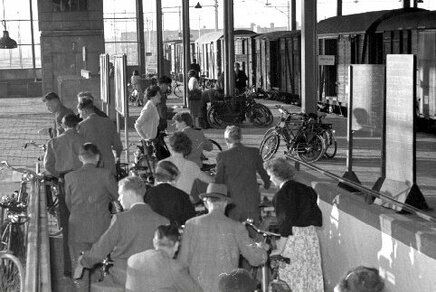Perfecting protonic ceramic membrane reactors for CO2 conversion
Usman Mushtaq defended his PhD thesis at the department of Chemical Engineering and Chemistry on May 26th.
![[Translate to English:] [Translate to English:]](https://assets.w3.tue.nl/w/fileadmin/_processed_/f/d/csm_Mushtaq%20Banner%20image_c9e53fdb72.jpg)
As we move towards a cleaner, low-carbon future, we also need to secure alternative energy sources. Renewable sources like wind and solar power can be intermittent and location-dependent, which makes it challenging to maintain a stable energy supply. To solve this problem, we need more efficient devices and processes to store the surplus renewable energy. Protonic ceramic membrane reactors are a promising technology that can connect the electrical, chemical, and thermal energy sectors. For his PhD thesis, Usman Mushtaq addressed the challenges related to the fabrication, integration, and design of these membrane reactors.
Energy storage in the form of electricity is currently constrained by limited capacity. Meanwhile, to discontinue our reliance on fossil fuel reserves, alternative sources of carbon (C), Hydrogen (H) and nitrogen (N) must also be identified and utilized.
Thus, exploring ways to convert renewable energy and elementary molecular building blocks like CO2, H2O, and N2 into valuable products like fuels or chemicals is the ‘master key’ to a sustainable future.
In this regard, protonic ceramic membrane reactors (PCMRs) offer a promising technology that can efficiently couple electrical, chemical, and thermal energy sectors. They use ceramic conductors to extract or distribute protons, which can be precisely controlled using an external electric current. These reactors can operate within an intermediate temperature range of 300-500°C, which promotes material stability and offers exceptional thermodynamic possibilities for executing a series of chemical reactions that play a crucial role in fulfilling our societal needs.
Fabrication, integration, and design
For his PhD thesis, Usman Mushtaq focuses on addressing the challenges related to the fabrication, integration, and design of the PCMRs that can convert carbon dioxide into methane that could be used as both a fuel and a hydrogen carrier, and thus utilizing existing gas pipelines.
Mushtaq successfully developed PCMRs with performance characteristics comparable to or higher than state-of-the-art technologies. In addition, novel approaches were explored and demonstrated to synergistically combine the electrochemical and thermal routes to achieve performance beyond state-of-the-art, with CO2 conversion efficiency at over 95%.
In the thesis, Mushtaq also presents how the findings can be implemented in other relevant reactions in the energy transition, such as the synthesis of methanol and ammonia.
Title of PhD thesis: Protonic Ceramic Membrane Reactors for Carbon dioxide Valorization: Cell Architecture and Electrodes. Supervisors: Richard van den Sanden, Fausto Gallucci, and Mihalis Tsampas.
Media contact
Latest news


